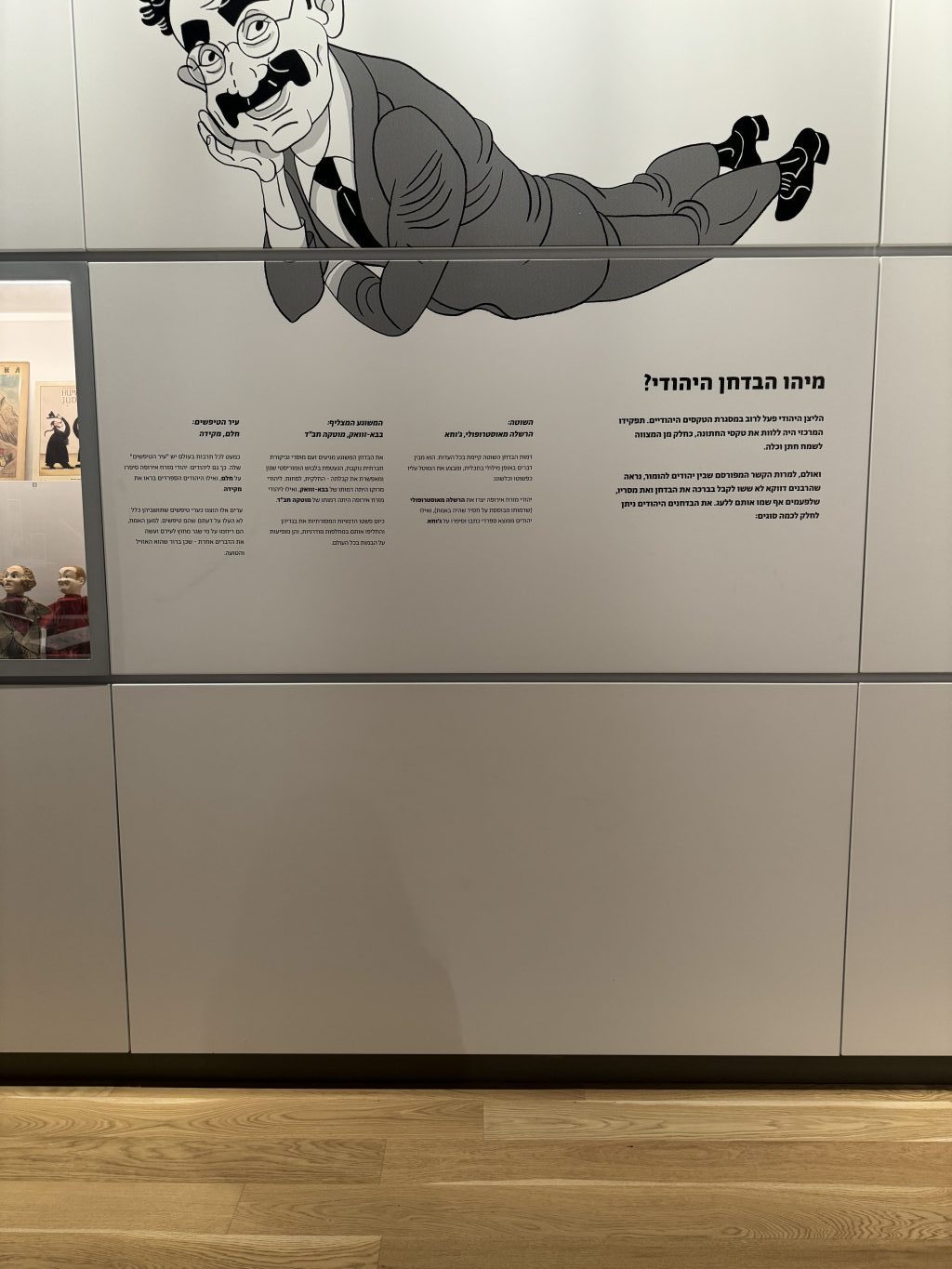Text Panel
Jewish jesters could usually be found at Jewish events. Their main role was to accompany wedding ceremonies in keeping with the commandment to make the bride and groom happy. However, despite the well-known connection between Jews and humor, it appears that the rabbis were not that eager to accept the message conveyed by the jesters, who at times even mocked them.
Jewish jesters can be divided into a number of categories:
The Fool: hershele Ostropoler, Joha
The image of the foolish jester can be found in all ethnic groups. he takes things literally and does what is expected of him to the letter. Eastern European Jews created hershele Ostropoler (whose character was based on an actual Chassid), whereas Jews of Sephardi descent wrote and told stories about Joha.
The Sharp-Tongued Lunatic: Motke Chabad, Baba-Zawak
The crazy jester is driven by moral outrage and sharp social criticism, which are cloaked in a witty, comical garb that facilitates its acceptance – or at least in part. Eastern European Jews had the figure of Motke Chabad, whereas Moroccan Jews had Baba-Zawak.
In this day and age, the traditional jesters have removed their attire and replaced it with modern garments, performing on stages across the globe.
The Town of Fools: Chelm, Makeda
Nearly every culture around the world has had its own ‘town of fools.’ So did the Jews: Eastern European Jews told stories about Chelm, whereas Sephardi Jews invented Makeda. These towns of fools were depicted as places whose residents did not for a moment think they were fools. In fact, they pitied those who lived in other towns and did things differently – believing that the others were simpletons and misguided.

